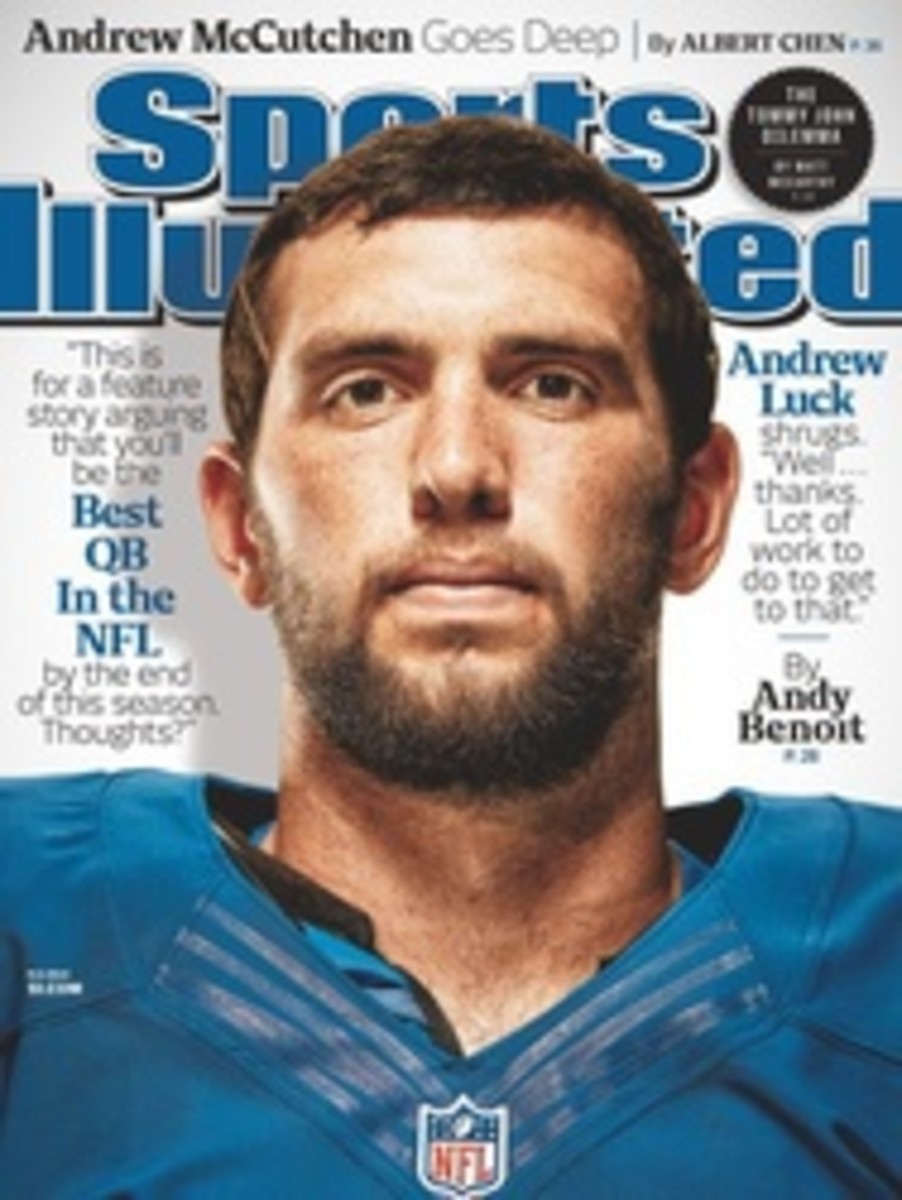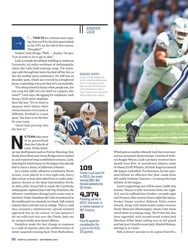
Read Option
AS UNFATHOMABLE as it seems in an era when football blots out the sun for every other sport, there was a time when the nation's newspapers treated it as little more than an afterthought. The excitement over, say, Red Grange playing in New York for the first time (1927), or Jim Thorpe and the Carlisle Indians upsetting Army (1912), would last for a day or so. Then it was back to baseball, boxing and horse racing, the sports that ruled the headlines in the first half of the 20th century. All were woven into the fabric of everyday life, and all were platforms for the storytelling that seemed as foreign to football as an ode on a Grecian urn.
The salvation of football writing began after World War II, when the press box ceased to be Mount Olympus, and its denizens took it upon themselves to troop down to the locker room and find out what they didn't know, which was usually just about everything. Baseball writers blazed the trail, and their brethren in football followed as a matter of survival. The reporting got better, and so, by the mid-'50s and early '60s, did the writing. There were more and more stories with style, attitude and touches that suggested writers had not only read Hemingway but also were copping his moves.
The sportswriting revolution stoked the public's burgeoning interest in the NFL and made an autumn Saturday without a college game seem like a crime against nature. Prose stylists reigned in every press box, probing coaches' psyches and seeking out the fun in the games.
To some, the epicenter of that change was the ragged, largely unread Fort Worth Press. By the mid '50s its sports editor, Blackie Sherrod, who could be gruff and funny in the same sentence, had populated his staff with hugely talented young cutups and turned them loose. As Jones Ramsey, the University of Texas publicist and self-proclaimed "world's tallest fat man," liked to say, the only sports in the state were football and spring football. Dan Jenkins, Edwin (Bud) Shrake and Gary Cartwright didn't need to be told what to write about.
Jenkins and Shrake went on to become stars at SPORTS ILLUSTRATED, and Cartwright's byline would also occasionally appear in the magazine when he wasn't writing best-selling crime books and achieving exalted status at Texas Monthly. Jenkins in particular influenced a generation of writers with his cool, knowing, sacred-cow-tipping football coverage. He landed at SI in 1962, four years after a distinctly unstylish story had shown the magazine's brain trust the truth and the light. The story was about the Colts' sudden-death overtime victory over the Giants in what the magazine's headline proclaimed THE BEST FOOTBALL GAME EVER PLAYED. If it was passion that football fans wanted, SI would give them passion.
As football made giant strides toward sports-world domination, the coverage of the game had to get better and broader. Suddenly, by the late '60s, it wasn't just SI and Sport magazine providing football stories to remember. There was Life, Look and The Saturday Evening Post. You had Esquire weighing in more than it ever had, too, and, beginning in the mid-'80s, GQ had joined the chorus.
From the world of nonfiction books came George Plimpton's Paper Lion, Myron Cope's The Game That Was and Instant Replay, Dick Schaap's unforgettable collaboration with Jerry Kramer, an All-Pro guard for Vince Lombardi's Packers. Here was football as TV had yet to show it, rich not just in immediacy but in history, lore and personalities. The public response was a demand for more and even better books, which led to David Maraniss's state-of-the-art 1999 Lombardi biography, When Pride Still Mattered, and H.G. Bissinger's Friday Night Lights, a brave, empathetic 1990 study of high school football in small-town Texas.
But if you wanted to feel the pulse of football during the last 40 years of the 20th century, you had to read newspapers. They were there every day. They gave readers the scores and the scoop on sprained ankles, and they opened their pages for reporters and columnists to put a face on coaches and players. When the Super Bowl tolled each winter, reporters came from the Los Angeles Times, The Boston Globe, The Washington Post and The Dallas Morning News, 10, 12, 14 at a time, reveling in their success as if it would never end. And then it did.
Papers began going out of business, budgets were slashed, staff reductions became part of the equation, and finally the people in charge were happy to have even one writer at the Super Bowl. For those of us who had written about football in the good times, it was the absence of the time and space for storytelling and the decline of what we considered our high standards that hurt.
Surely, we told one another, there would never be another generation of writers like us. But there is, and they're out there now. Not many write for newspapers, and if they do, they're likely plotting a move to a magazine or website that will allow them to dig into football with all their passion and soul. For all I know, they're better than we ever were.
Adapted from Football: Great Writing About the National Sport, published by The Library of America.
Prose stylists reigned in every press box, probing coaches' psyches and seeking out the fun in the games.
NFL
Rules Impact
16
Extra Mustard
17
Faces in the Crowd
18
Dan Patrick
Matt Cassel
20
Big Board
Simone Biles
22
The Case For
Independence
24
GO FIGURE
46
Consecutive batters retired by Giants righty Yusmeiro Petit over eight games from July 22 through last Thursday, breaking the record set by Mark Buerhle in 2009.
$340,000
Amount paid at auction for Lou Gehrig's 1928 World Series watch. Both the consignor of the watch and the auction house will donate a portion of the money to ALS charities; No word on whether it's waterproof.
18
Minutes it takes, at most, from a U.S. Open player's request to have his or her racket restrung to the racket's return to the court. Wilson will string approximately 4,500 rackets during the fortnight in Flushing Meadows.
5.6
Assists averaged by Mercury guard Diana Taurasi, most in the WNBA. No player has led the league in scoring—as Taurasi has done five times—and assists, in either the same or a different season.
PHOTO ILLUSTRATION
ILLUSTRATION BY DARROW
PHOTO
THEARON W. HENDERSON/GETTY IMAGES (PETIT)
PHOTO
COURTESY OF SCP AUCTIONS(WATCH)
PHOTO
COLLECTION MIX/GETTY IMAGES (RACKET)
PHOTO
BARRY GOSSAGE/NBAE/GETTY IMAGES (TAURASI)
PHOTO

